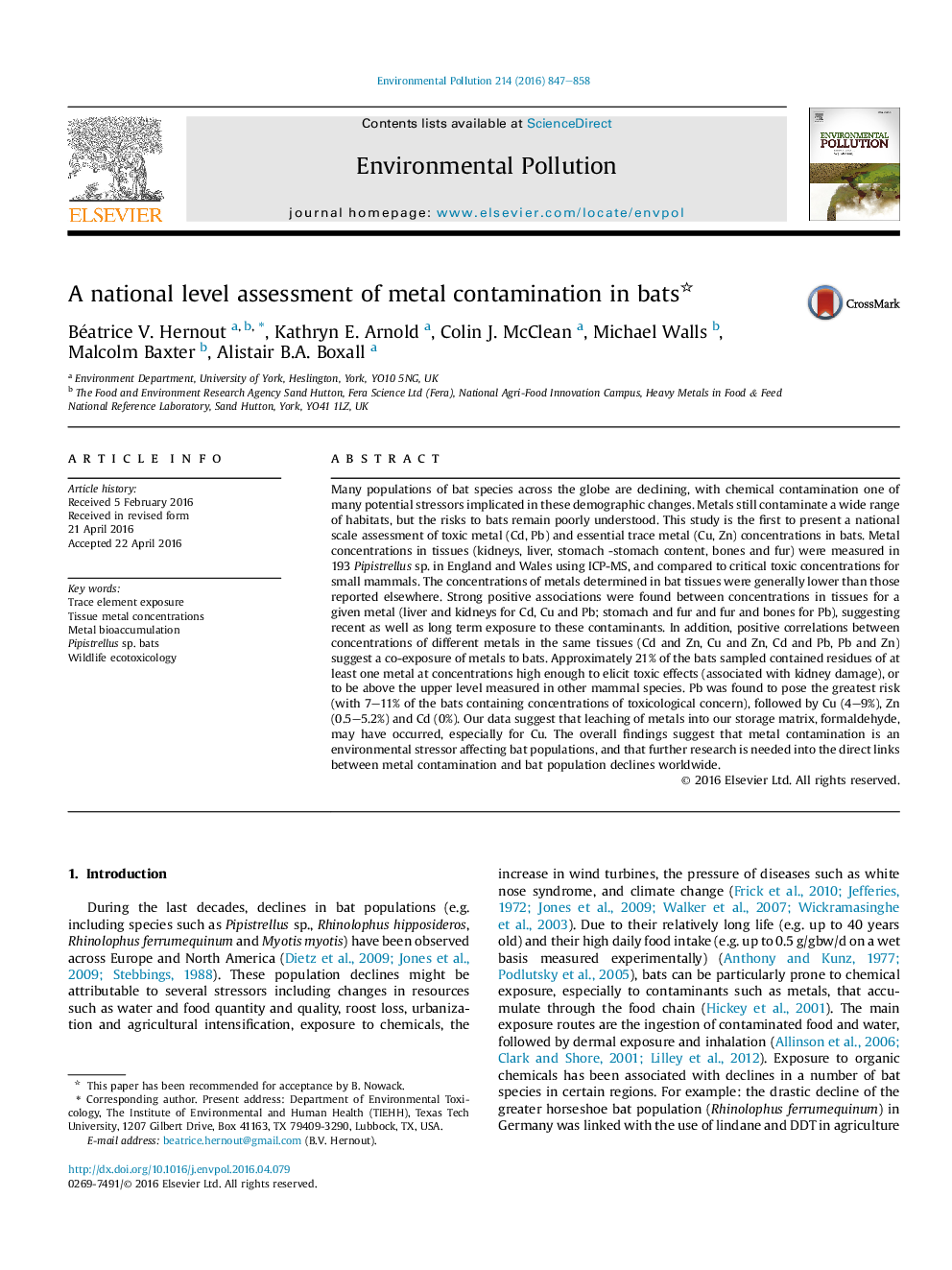| کد مقاله | کد نشریه | سال انتشار | مقاله انگلیسی | نسخه تمام متن |
|---|---|---|---|---|
| 6315436 | 1619159 | 2016 | 12 صفحه PDF | دانلود رایگان |
عنوان انگلیسی مقاله ISI
A national level assessment of metal contamination in bats
ترجمه فارسی عنوان
ارزیابی سطح ملی آلودگی فلزات در خفاش ها
دانلود مقاله + سفارش ترجمه
دانلود مقاله ISI انگلیسی
رایگان برای ایرانیان
کلمات کلیدی
موضوعات مرتبط
علوم زیستی و بیوفناوری
علوم محیط زیست
شیمی زیست محیطی
چکیده انگلیسی
Many populations of bat species across the globe are declining, with chemical contamination one of many potential stressors implicated in these demographic changes. Metals still contaminate a wide range of habitats, but the risks to bats remain poorly understood. This study is the first to present a national scale assessment of toxic metal (Cd, Pb) and essential trace metal (Cu, Zn) concentrations in bats. Metal concentrations in tissues (kidneys, liver, stomach -stomach content, bones and fur) were measured in 193 Pipistrellus sp. in England and Wales using ICP-MS, and compared to critical toxic concentrations for small mammals. The concentrations of metals determined in bat tissues were generally lower than those reported elsewhere. Strong positive associations were found between concentrations in tissues for a given metal (liver and kidneys for Cd, Cu and Pb; stomach and fur and fur and bones for Pb), suggesting recent as well as long term exposure to these contaminants. In addition, positive correlations between concentrations of different metals in the same tissues (Cd and Zn, Cu and Zn, Cd and Pb, Pb and Zn) suggest a co-exposure of metals to bats. Approximately 21% of the bats sampled contained residues of at least one metal at concentrations high enough to elicit toxic effects (associated with kidney damage), or to be above the upper level measured in other mammal species. Pb was found to pose the greatest risk (with 7-11% of the bats containing concentrations of toxicological concern), followed by Cu (4-9%), Zn (0.5-5.2%) and Cd (0%). Our data suggest that leaching of metals into our storage matrix, formaldehyde, may have occurred, especially for Cu. The overall findings suggest that metal contamination is an environmental stressor affecting bat populations, and that further research is needed into the direct links between metal contamination and bat population declines worldwide.
ناشر
Database: Elsevier - ScienceDirect (ساینس دایرکت)
Journal: Environmental Pollution - Volume 214, July 2016, Pages 847-858
Journal: Environmental Pollution - Volume 214, July 2016, Pages 847-858
نویسندگان
Béatrice V. Hernout, Kathryn E. Arnold, Colin J. McClean, Michael Walls, Malcolm Baxter, Alistair B.A. Boxall,
